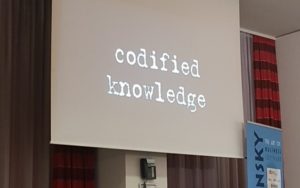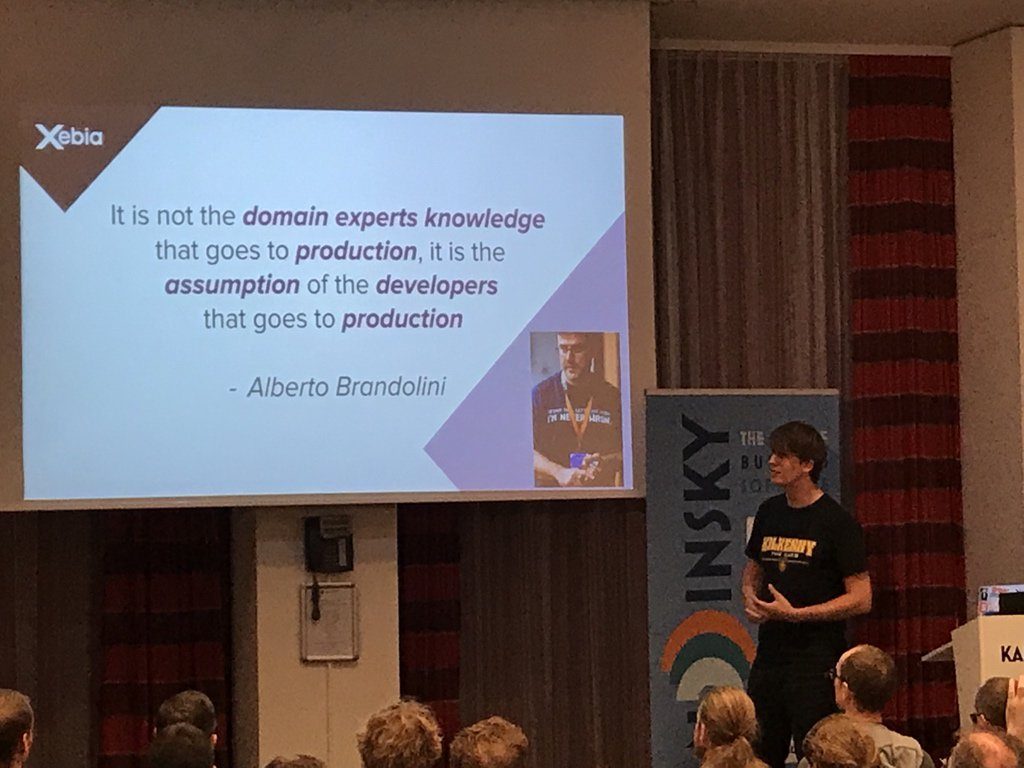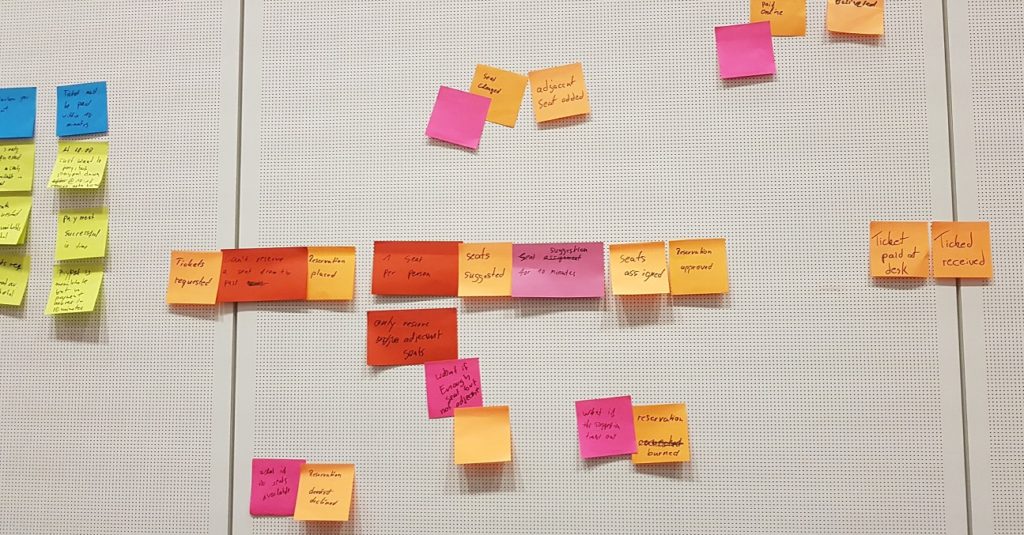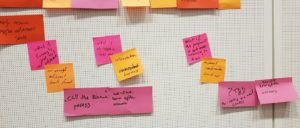The second edition of “KanDDDinsky – The art of business software” took place on the 18-19th October 2018. For me it was the best conference I have visited for long time: the talks I attended at this conference created all together a coherent picture and the speakers made me sometimes feel like visiting an Open Space, an UnConference. It felt like a great community event with the right amount of people with right amount of knowledge and enough time to have great discussions during the two days.
These are my takeaways and notes:
Michael Feathers “The Design of Names and Spaces” (Keynote)
- Do not be dogmatic, sometimes allow the ubiquitous language to drive you to the right data structure – but sometimes is better to take the decisions the other way around.
- Build robust systems, follow Postel’s Law
Be liberal in what you accept, and conservative in what you send.
If you ask me, this principle shouldn’t be only applied for software development…
Kenny Baas-Schwegler – Crunching ‘real-life stories’ with DDD Event Storming and combining it with BDD
I learned so much from Kenny that I had to write it in an separate blog post.
Update: the video of this talk can be seen here
Kevlin Henney – What Do You Mean?
This talk was extrem entertaining and informative, you should watch it after it will be published. Kevlin addressed so many thoughts around software development, is impossible to choose the one message. And yes: the sentence “It’s only semantics” still makes me angry!

Here is the video to watch.
Herendi Zsofia – Encouraging DDD Curiosity as a Product Owner
It was interesting to see a product owner talking about her efforts making the developers interested in the domain. It was somehow curious because we were on a DDD conference – I’m sure all present were already interested in building the right features fitting to the domain and to the problem – but of course we are only the minority among the coding people. She belongs to the clear minority of product owners being openly interested in DDD. Thank you!
Matthias Verraes – Design Heuristics
Last talk for today at #kddd @kandddinsky by one of the masters himself – @mathiasverraes pic.twitter.com/lsTZHMS9rk
— Sven Till (@sventill74) October 18, 2018
This session was so informative that I had to write a separate post about all the things I learned.
J. B. Rainsberger – Some Underrated Elements of Success for the Modern Programmer
J.B. is my oldest “twitter-pal” and in the past 5+ years we discussed about everything from tests to wine or how to find whipped cream in a Romanian shopping center. But: we never met in person 😥 I am really happy that Marco and Janek fixed this for me!
The talk was just like I expected: clear, accurate, very informative. Hier a small subset of the tips shared by J.B.

There are talks which cannot be distilled. J. B.’s talk was exactly one of those. I really encourage everybody to invest the 60 minutes and watch it here.
Statistics #womenInTech
I had the feeling it were a lot of women at the conference even if they represented “only” 10% (20 from 200) of the participants. But still: 5-6 years ago I was mostly alone and it is not the case anymore. This is great, I really think that something had changed in the last few years!
The best conferences are which you make you wish you would have booked a later flight 😫
This is how @kandddinsky makes me feel just now.
Thank you guys from the orga for creating this conference and for investing so much thought in the right group of people! Bye #KDDD— Krisztina Hirth (@YellowBrickC) October 19, 2018




